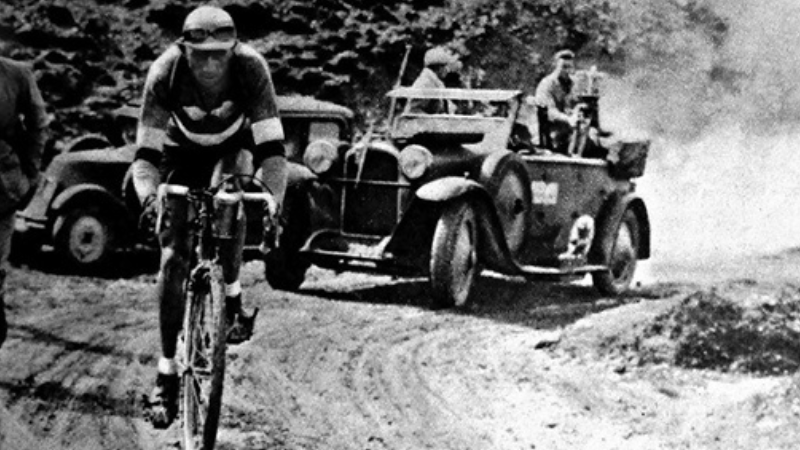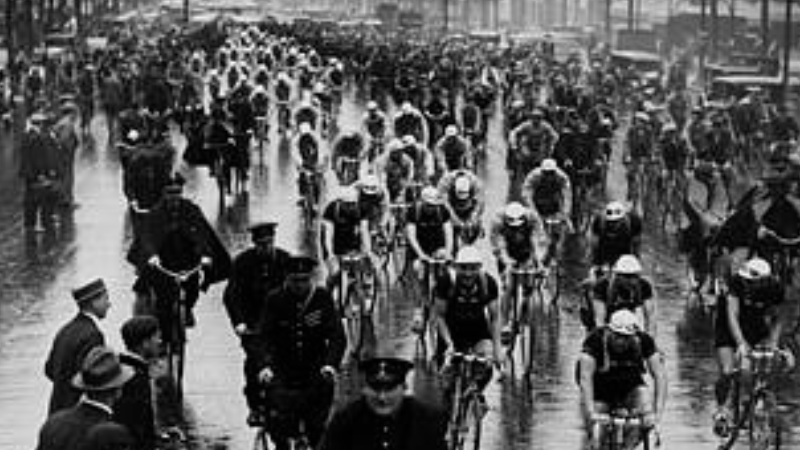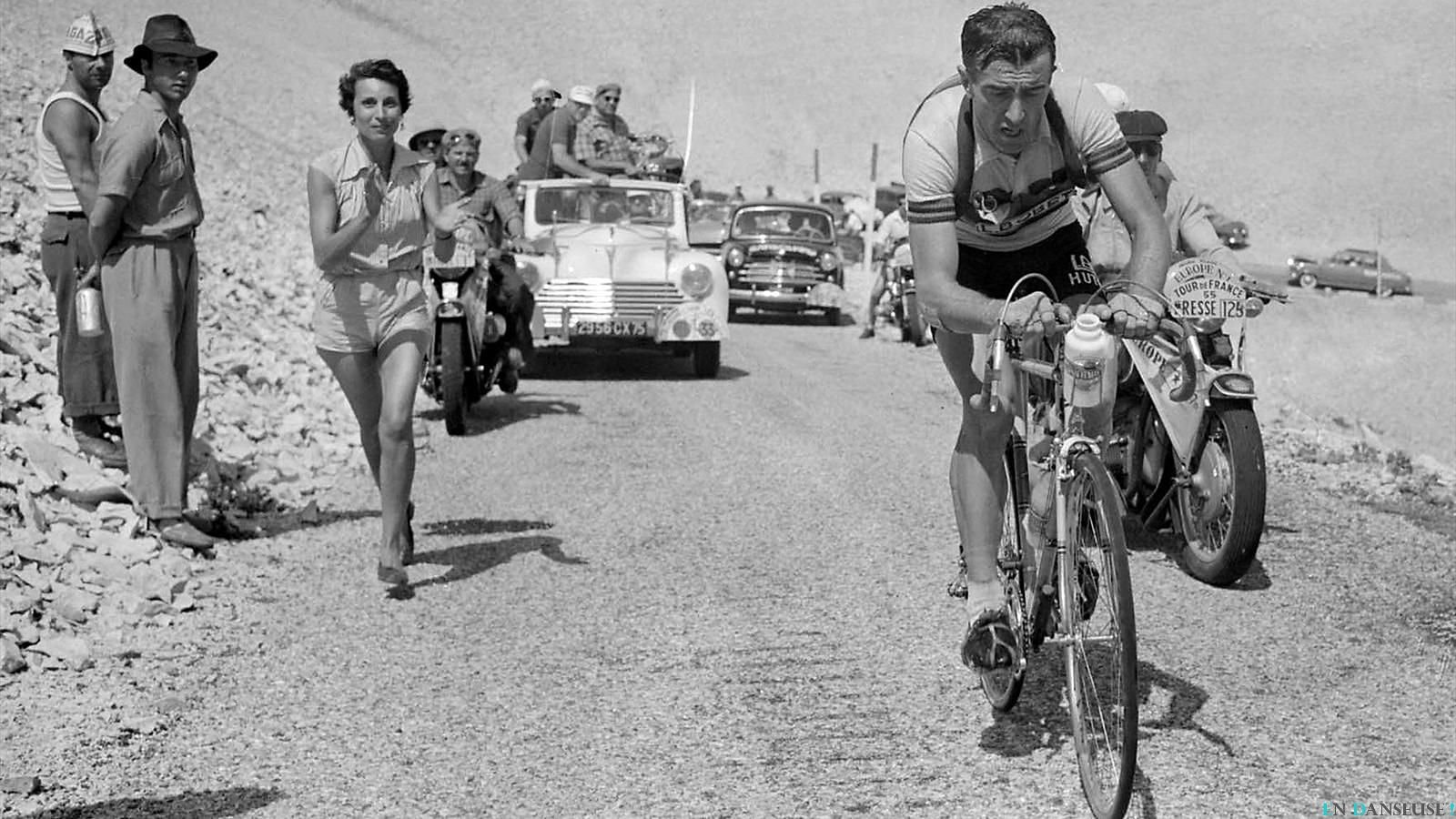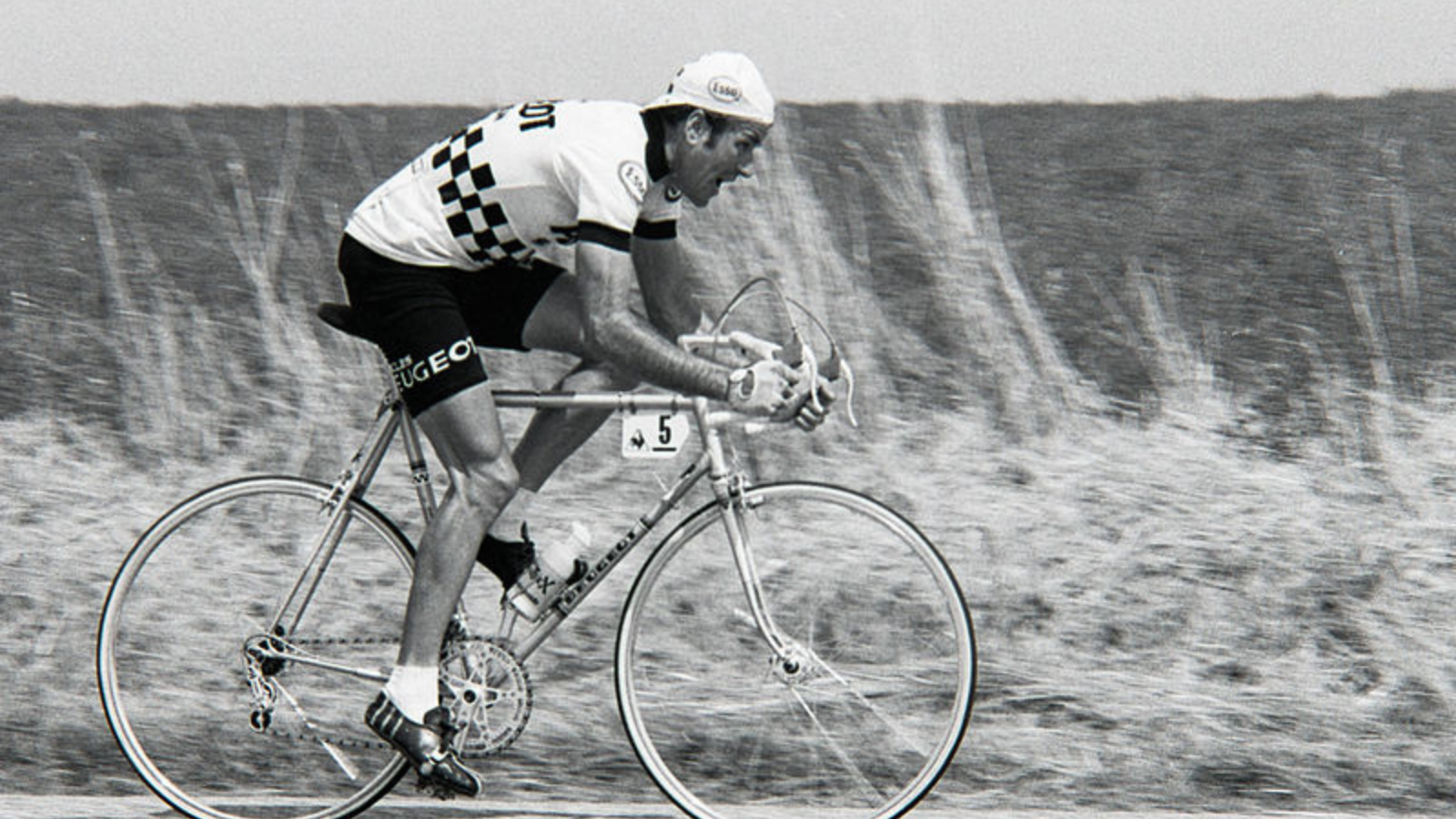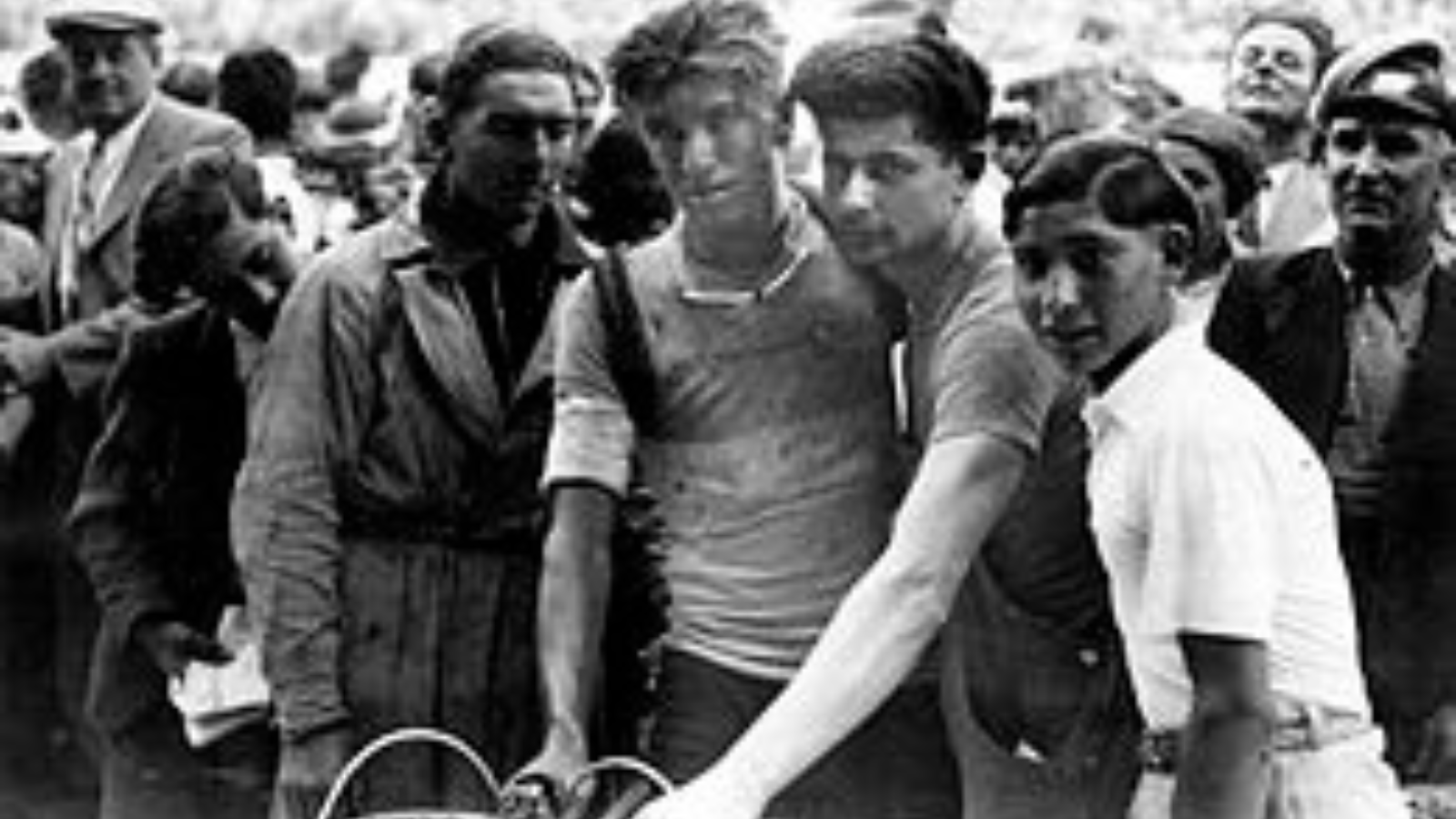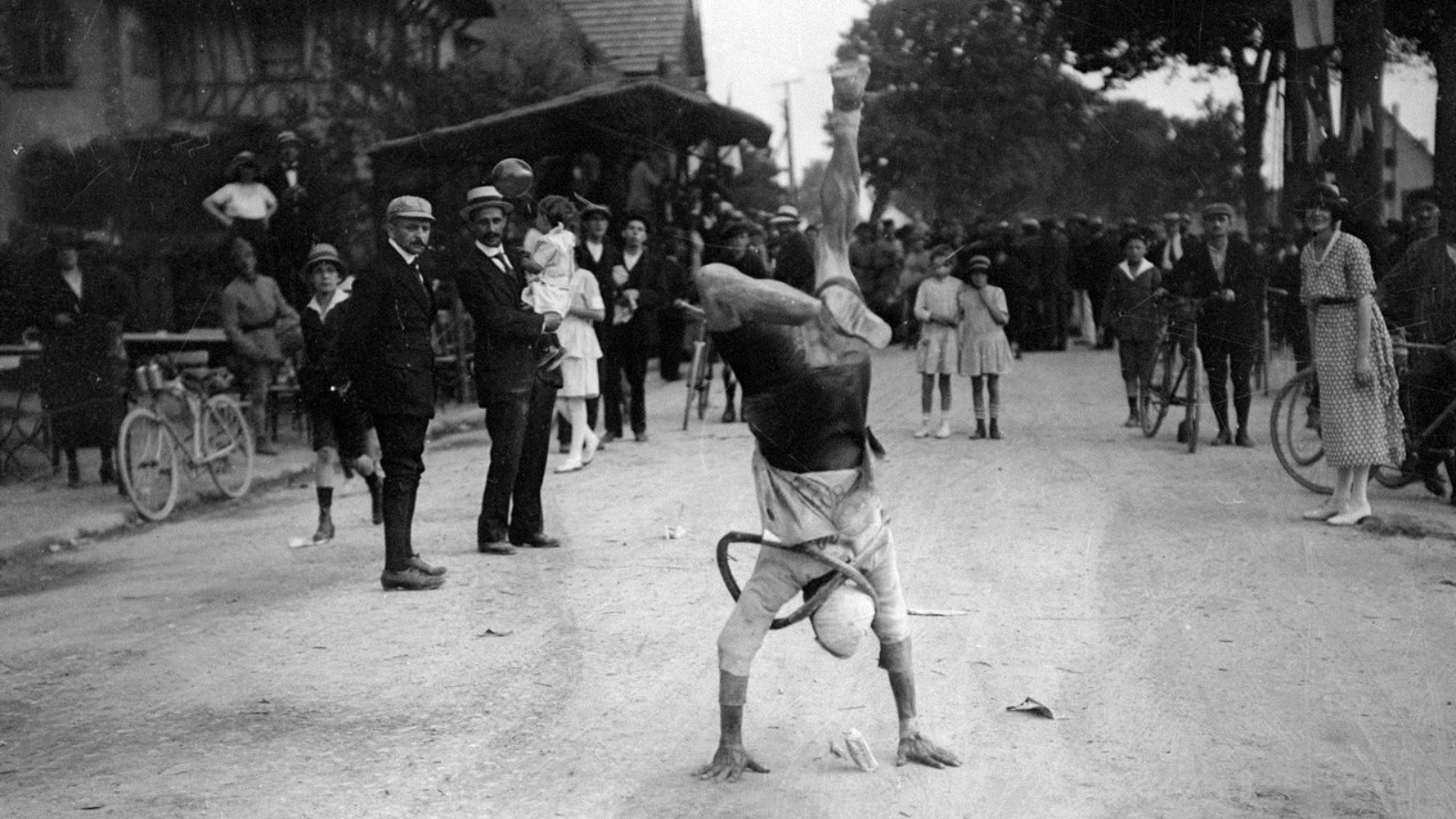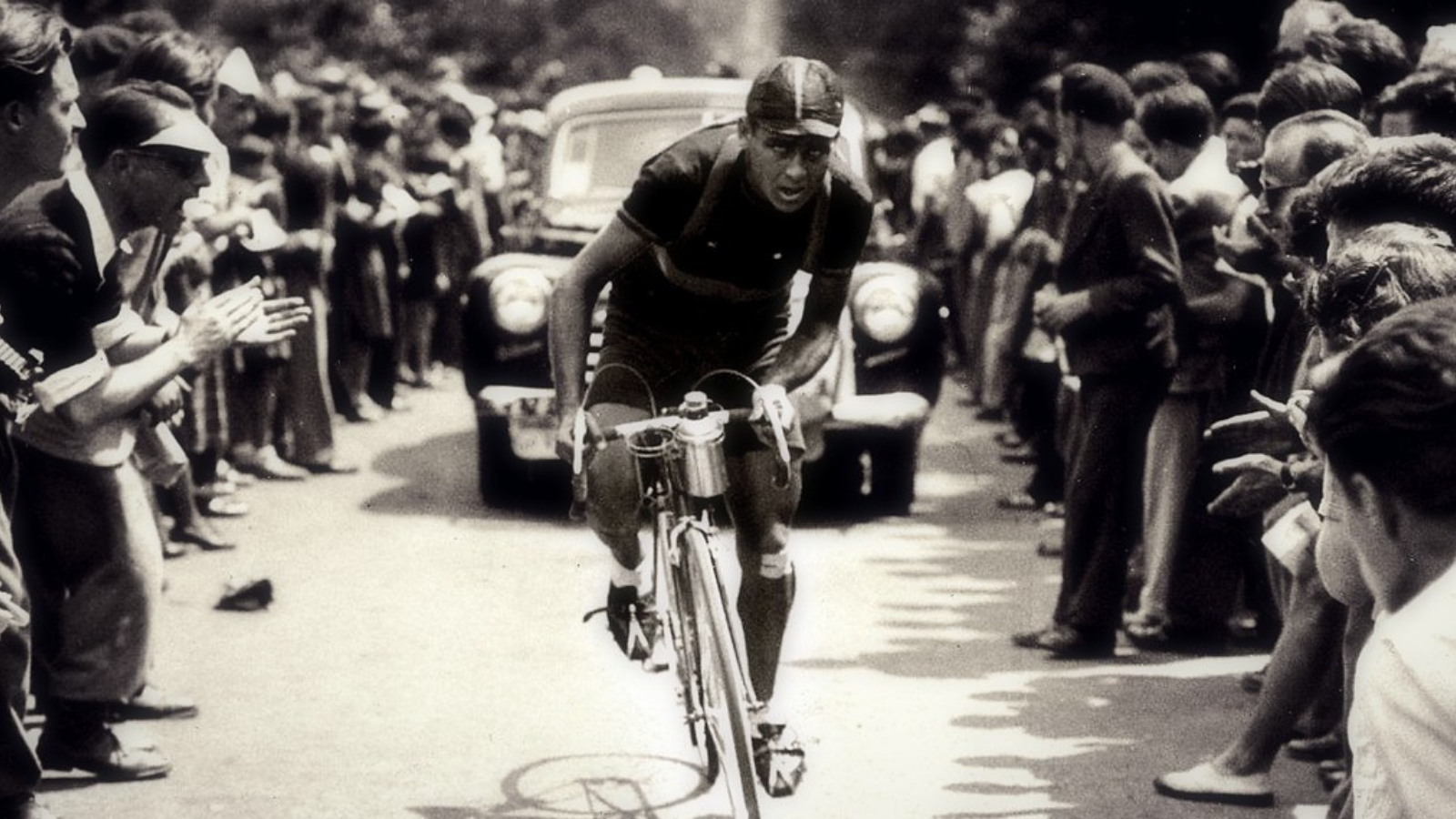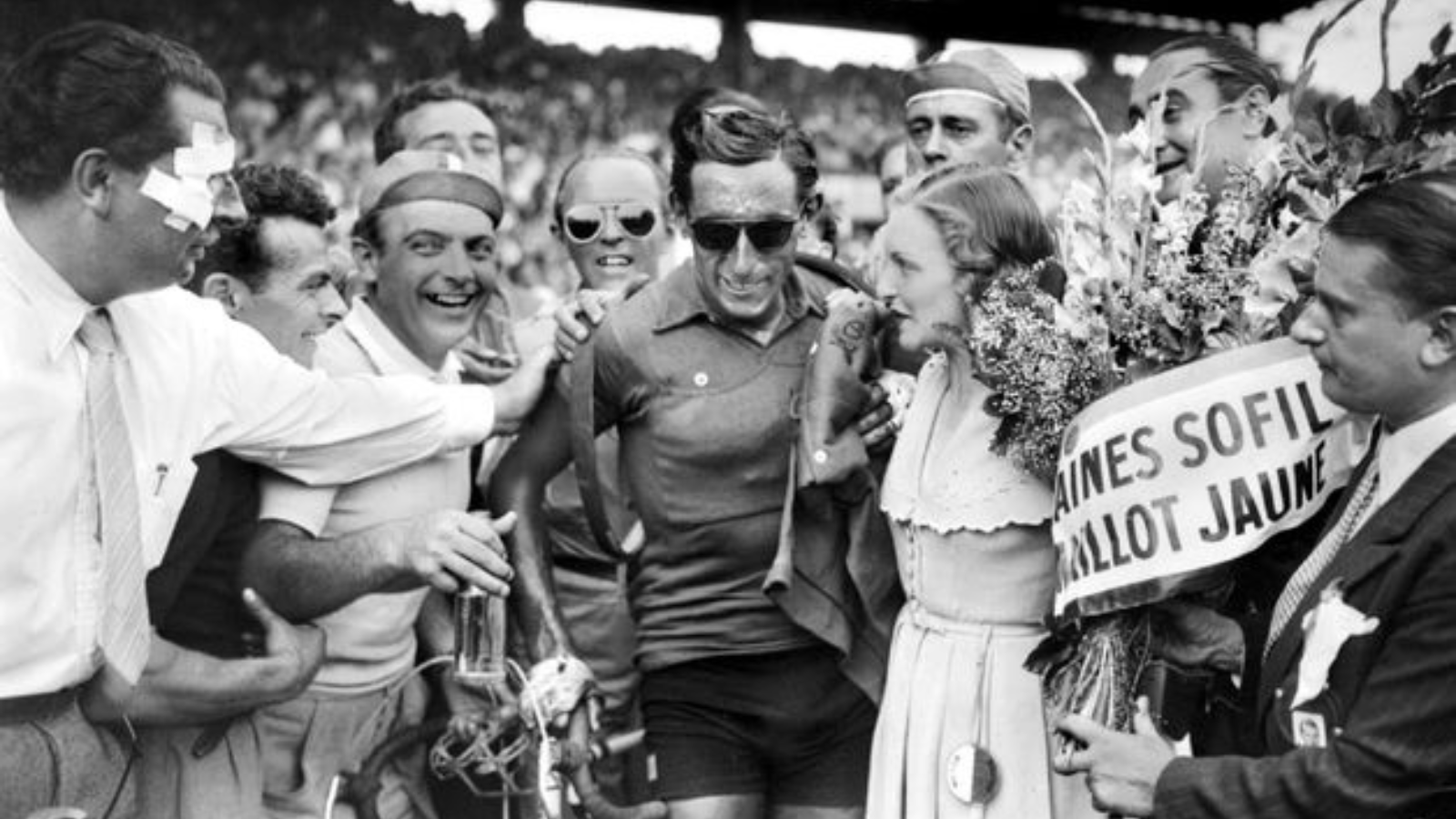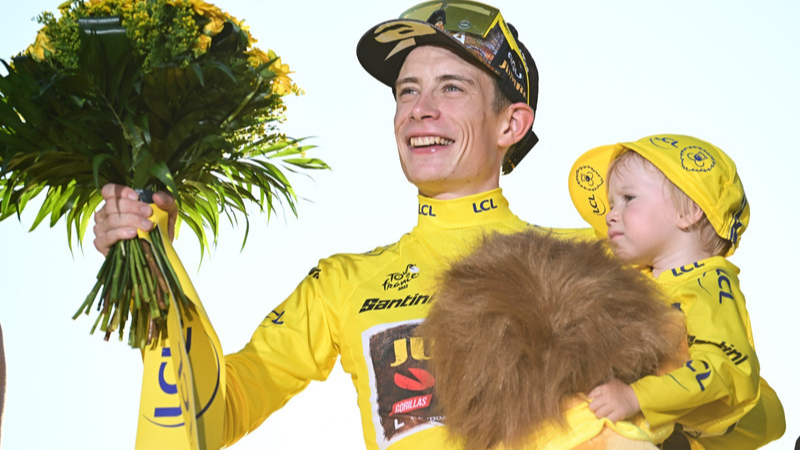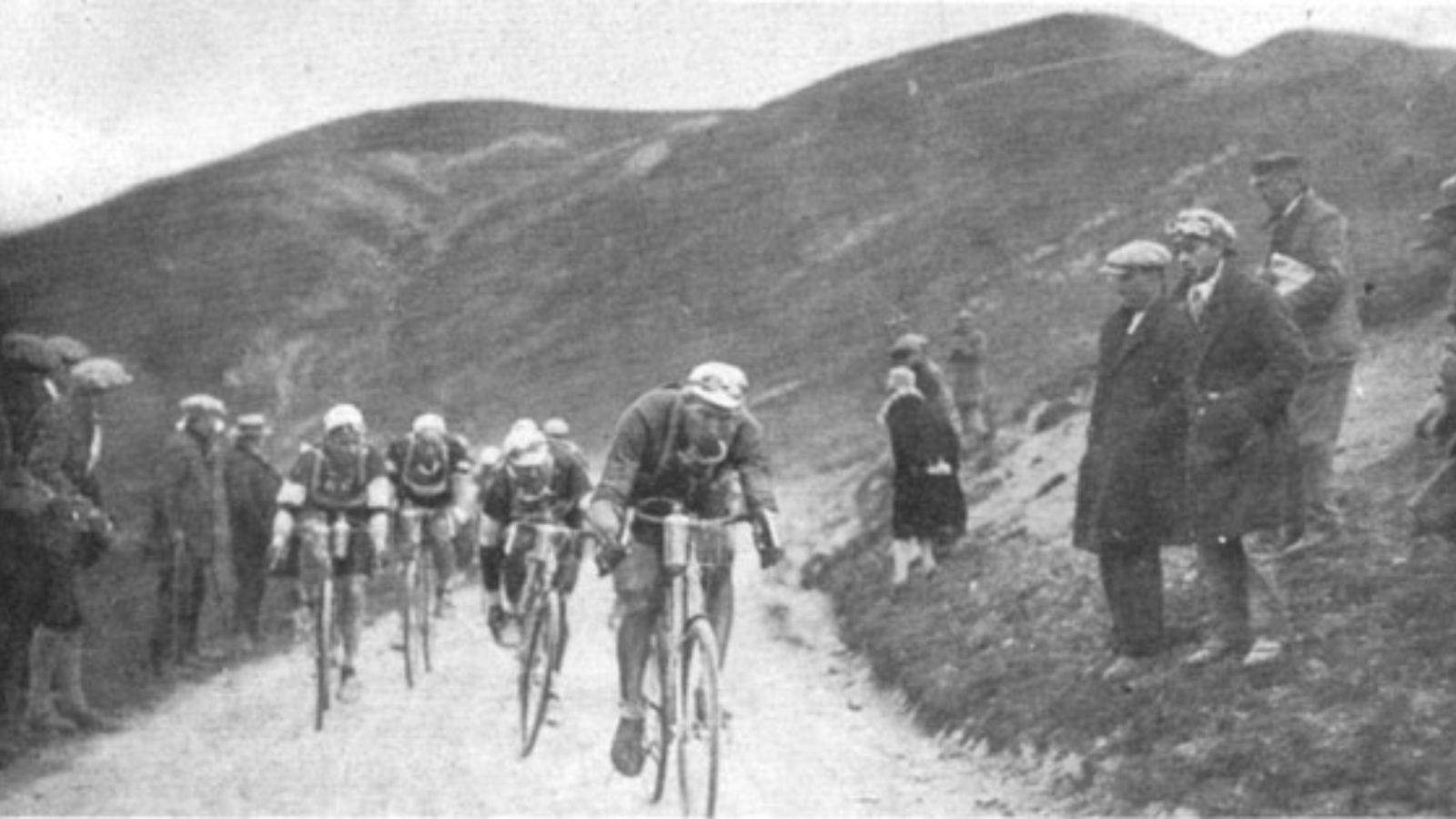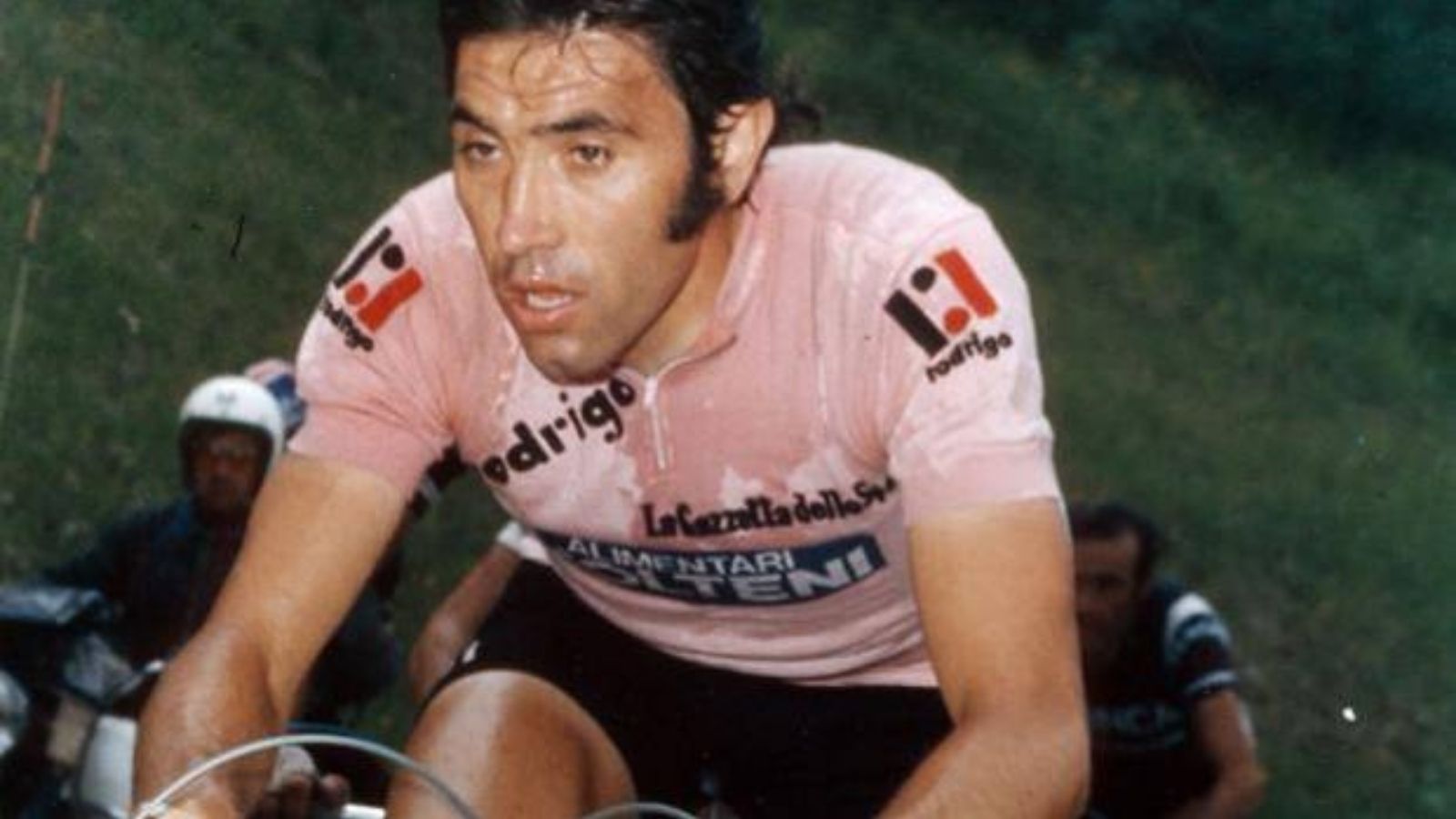There is nothing extraordinary in the fact, that cycling history is the main topic of PelotonTales blog, when its author is also a researcher (an independent scholar) of historical fiction (more precisely, the ficitonal representation of the past).
Indeed, seeing the past as endless source of fascinating stories is my daily routine, which I naturally transfer also into my other projects, like PelotonTales. For humans, life is understandable in form of stories. Just think about it! Even the random pictures created by our brains while sleeping (a.k.a dreams) we tend to remember as coherent, compact stories.
Nowadays, in the era of social media, there is a general habit of looking at black&white picture with a slightly odd nostalgia. It's strange, because sometimes those pictures were taken way before we were born, thus being nostalgic is rather an illusion. But the overall sentiment is that we love to watch old pictures, and are curious about the stories behind them.
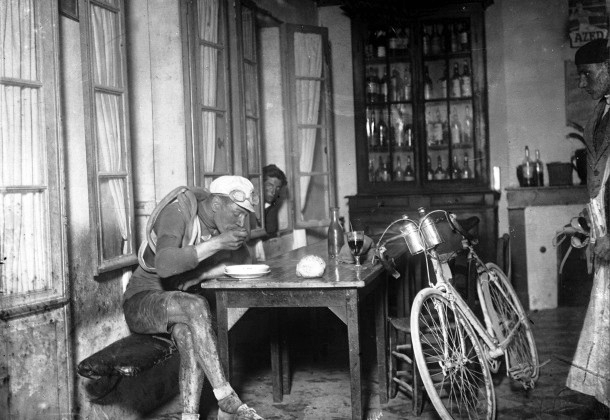
Similarities and differences
It is always the same thing with the past: we're seeking to discover, to absorb in our soul and mind the similarities and the differences between now and then in the same time. When it comes to historical fiction, it seems obvious: there are some basic human feelings and some basic types of human interactions, that has been always defined people's everyday life in any time ("similarities"), but there are different circumstances (different social structure, different level of technological advancement, etc) in different time periods, which give a different frame to those basic human stuff (hence this is the "differences" part). Finding the balance between them in a story set in the past is always one of the most pivotal questions of the historical fiction genre.
But the dichotomy of similatiries and differences works also in the context of road cycling history. As you might have already spotted, I sometimes like to emphasise in my post, that many of the
road cycling races were professional sport events since the birth of bicycle,
only the word "professional" evokes different associations in us nowadays.
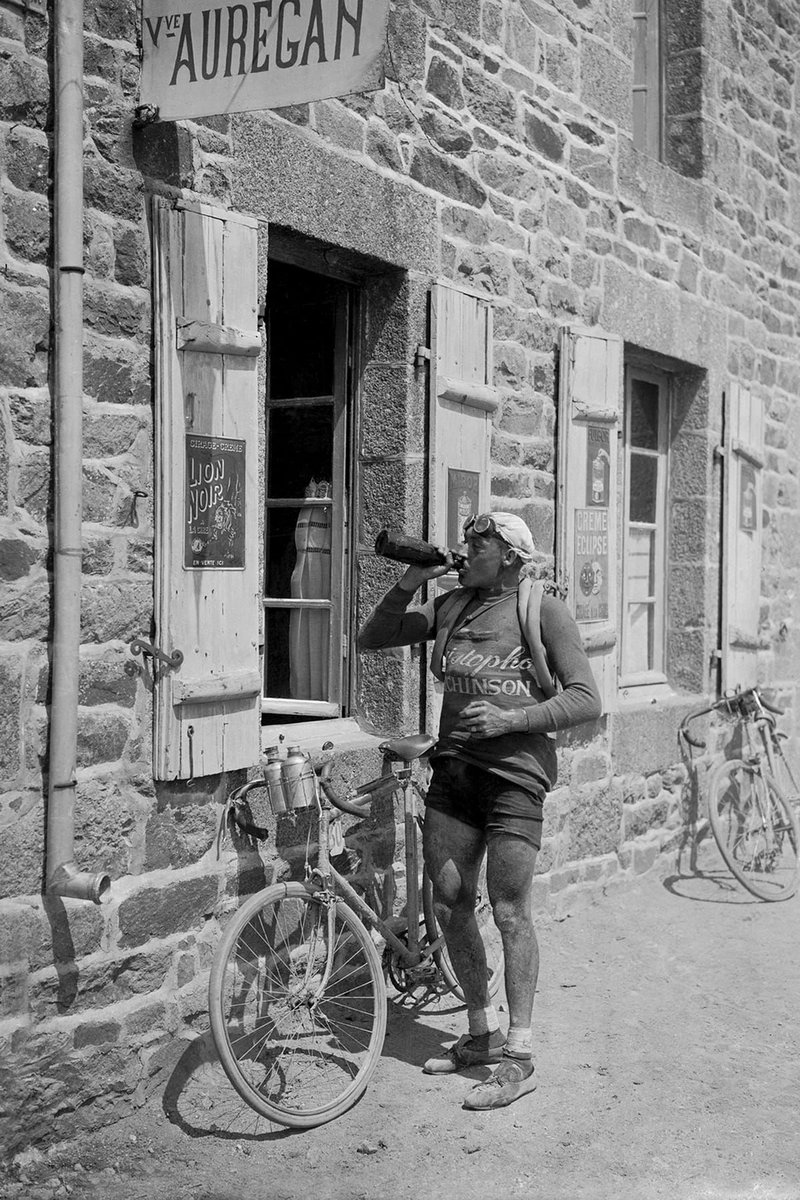
If you're diving deep into the buttomless rabit hole of old cycling images shared on internet, you surely find some strage, or even inapprotiate moments. For example, it always looks strange for our 21st-centurian eyes an image about cyclists reparing their own bicycles.
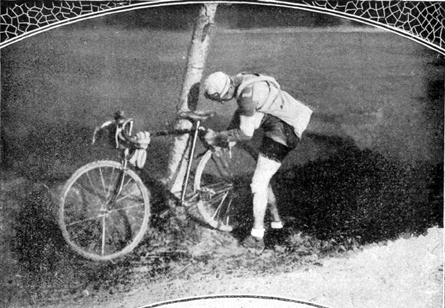
Even more weird is to see, when riders are drinking alcohol during the race or smoking, as the famous smoking cyclists picture, which is also one of the most popular vintage cycling images, shows us.
Epic moments and great heroes
Road cycling history is also media history. It's a well known fact, that the idea of creating a multiple stage race like the Tour de France based on the eagerness to increase selling numbers of newspapers. Following the events of a cycling race with the help of the newspaper reports, feeling the need to buy the next edition on the next day to learn about the story of the next stage created the uniqe style of writing about road cycling, which always contains a bit (at least a little bit, but mostly very much) exageration.
In the world of road cyling everything is epic.
Beyond the obvious, that athletes were making heroic efforts in the heydays to ride 300 (or even more) km, sitting half-day-long (or even longer) in the saddle, there is always a sense of being epic.
Epic moments also create great heroes. Sometimes tragic, but mostly celebrated ones. PelotonTales pays attention to the heroes of this sport. Also to great rivalries. Fausto Coppi and Gino Bartali, Jacques Anquetil and Raymond Poulidor, Eddy Merckx, Bernard Hinault. And all the others.
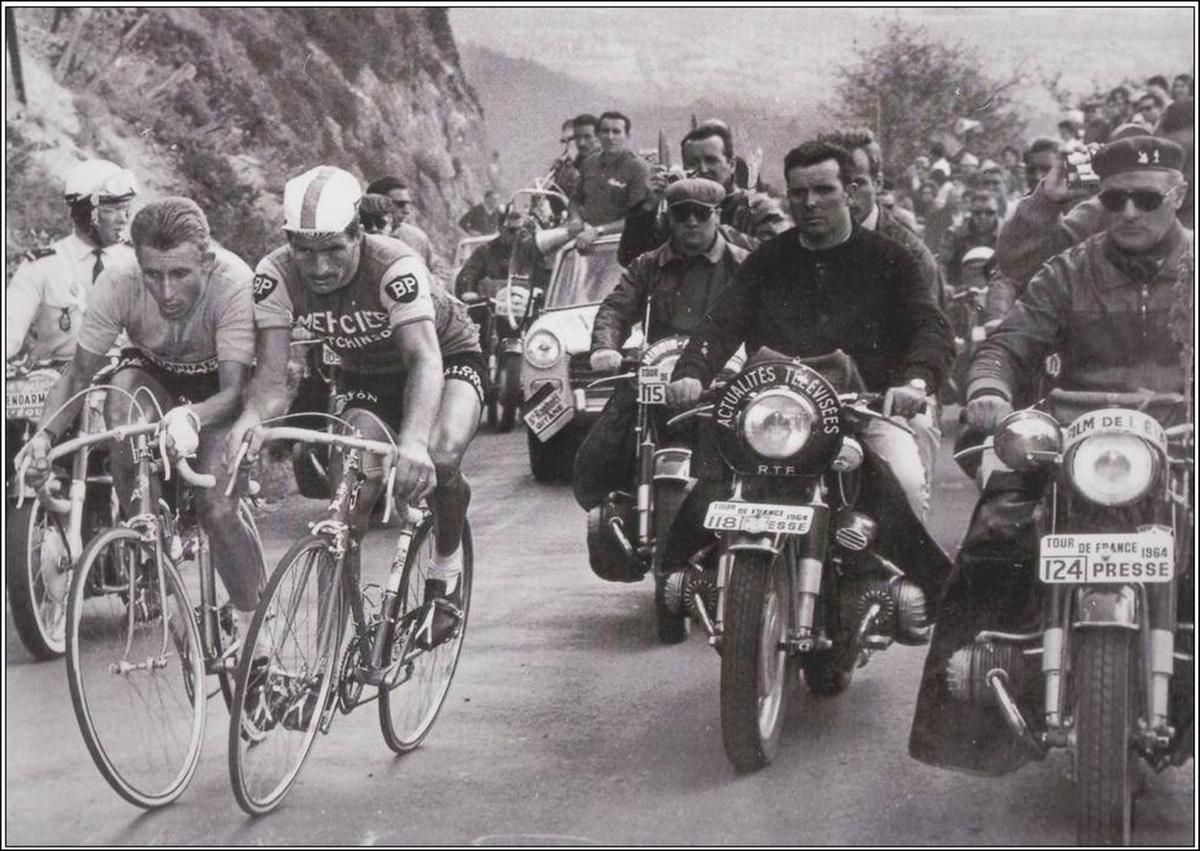
PelotonTales focuses on cycling history
What is considered historical? And when does the past begin? These are the most usual questions when you're working with stories from the past or set in the past.
From the practical point of view of writing a blog, the question sounds more like: on what time period the project does focus exacly? The most evident answer would be, that the blog includes the time period of the black and white photographies. Indeed, as more and more photos in colour exist, the time period seems less and less interesting. (Just think about the mechanism of the "illusiory nostalgia" I mentioned before.)
There is a period, which almost completely missed out from this blog: the 1990s and the 2000s.
Although I myself started following road cycling races in the 1990s, from a wider perspective, these two decades seem to be the lowest point in cycling history for many reasons, and I rather would like not to write abouth them.
New golden era creates new cycling history
But we don't really have to rely on those time period, if we want to talk about something more contemporary, do we? Because delightful developments are happening in the world of road cycling races since the last few years.
There is a new golden generation, that gives (almost) every race historical importance.
PelotonTales pays attention also to their achievents.
FACES FROM THE PELOTON
Faces from the peloton: Raymond Delisle (1943-2013)
Thank you for being a devoted reader of PelotonTales. You are the reason why it’s worth spending so many hours to create new content and trying to improve this website. If you would show appreciation to my work, please consider supporting the blog with a small donation. Thank you! Raymond Delisle was one of those… Read More »Faces from the peloton: Raymond Delisle (1943-2013)
Faces from the Peloton: Theo Middelkamp (1914-2005)
You would never guess in what kind of stage the first Dutch Tour de France stage winner, Theo (Theofiel) Middelkamp (1914-2005) gained his victory. In a mountain stage in the Alps, including Télégraphe, Galibier and Lautaret. Considering that even in the early 1950s, when Wim van Est, the first Dutch cyclist to wear the yellow… Read More »Faces from the Peloton: Theo Middelkamp (1914-2005)
Faces from the peloton: Jules Deloffre, “the acrobat cyclist”
Undoubtedly, there were plenty of cyclists with unique stories in the peloton in the first few decades of road cycling races. These atlethes were not necessarily successful riders or didn’t become the bigest stars of their days, but yet, their stories are worth to be told. Actually, if we are looking deeper into the well… Read More »Faces from the peloton: Jules Deloffre, “the acrobat cyclist”
Faces from the peloton: Raymond Impanis (1925-2010)
The winner of the longest ever individual time trial (139 km ) in the history of Tour de France, Raymond Impanis had a successful career. Although a bit in the shadow of the biggest names of the era. That certain individual time trial at Tour de France 1947 was one of his two TDF stage… Read More »Faces from the peloton: Raymond Impanis (1925-2010)
CYCLING FUN FACTS
Giro d’ Italia -Tour de France doubles
Fausto Coppi was the first rider to win the Giro d’Italia and the Tour de France in the same year (1949) In 2024, 26 years after Marco Pantani’s double victory, Tadej Pogacar managed to win both Giro d’Italia and Tour de France in the same year. The list of the riders Fausto Coppi (ITA) 1949… Read More »Giro d’ Italia -Tour de France doubles
The slowest and the fastest Tour de France
You might wonder which Tour de France edition was the slowest and wich one the fastest. Here you have the answer. The slowest Tour de France was the 13th edition, held between 29th June and 27 July in 1919. The 5560 km long route of the race was divided into 15 stages. (And it wasn’t… Read More »The slowest and the fastest Tour de France
Tour de France editions without previous winners in the peloton
During its 120-year long history, it happened only three times, when the peloton of Tour de France did not includ any previous winner. Obviously, in 1903 there couldn’t be any, because it was the very first edition. In 1927, it seems to have been a generational change in the peloton of Tour de France. Several… Read More »Tour de France editions without previous winners in the peloton
Most days in pink jersey
The pink jersey (maglia rosa) was introduced to the Giro d’Italia during the race in 1931.Learco Guerra (The Human Locomotive”) was the first rider to wear it.The top 11 riders with most days in pink jersey :Eddy Merckx 78 (1968,1969,1970,1972,1973,1974)Alfredo Binda 65 (1925,1927,1928,1929,1931,1933)Francesco Moser 50 (1976,1977,1979,1980,1981,1982,1984,1985)Giuseppe Saronni 48 (1979,1981,1983,1985,1986)Gino Bartali 42 (1936,1937,1939,1946,1947)Jacques Anquetil 42 (1959,1960,1961,1964,1967)Fausto… Read More »Most days in pink jersey
